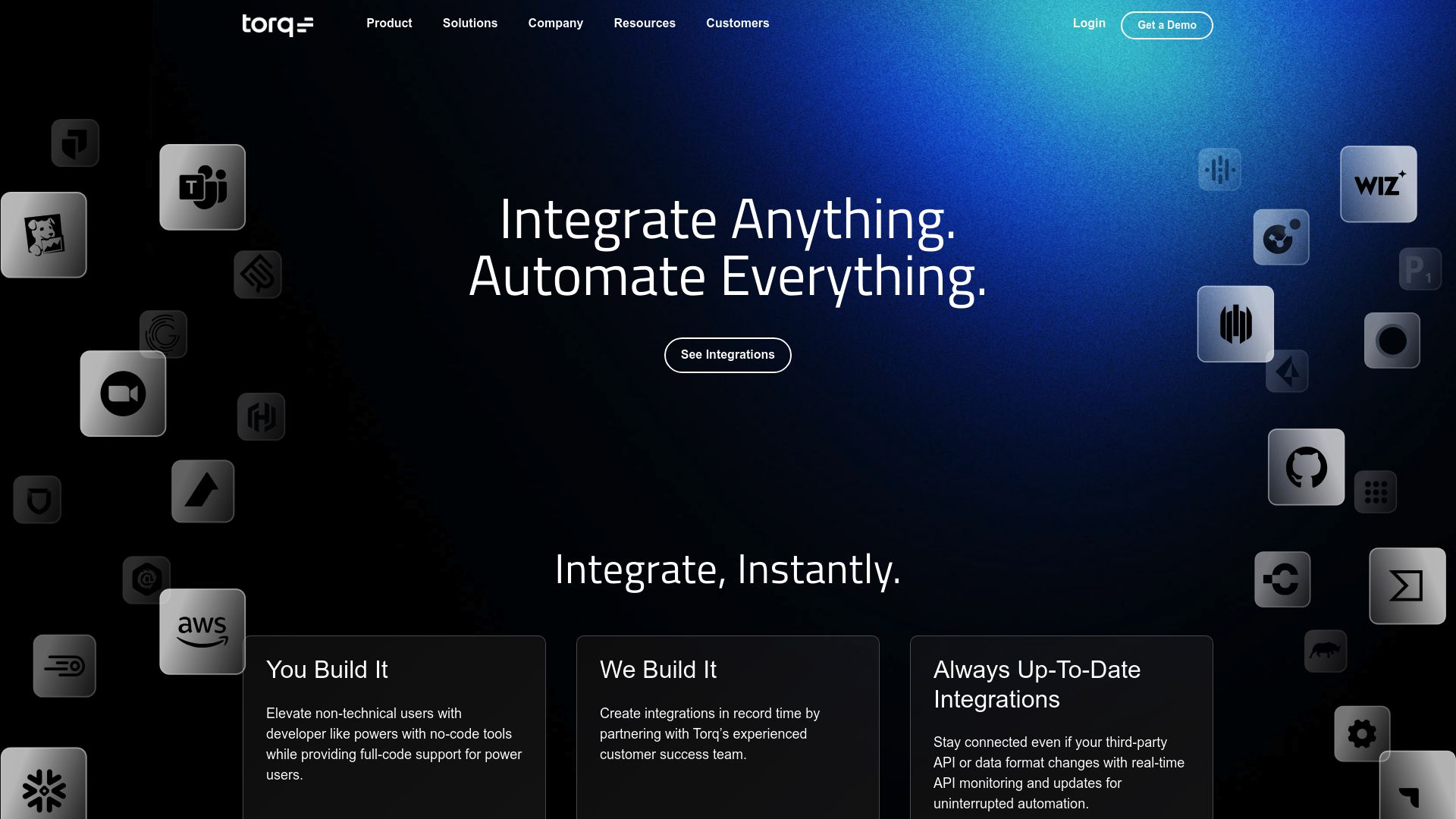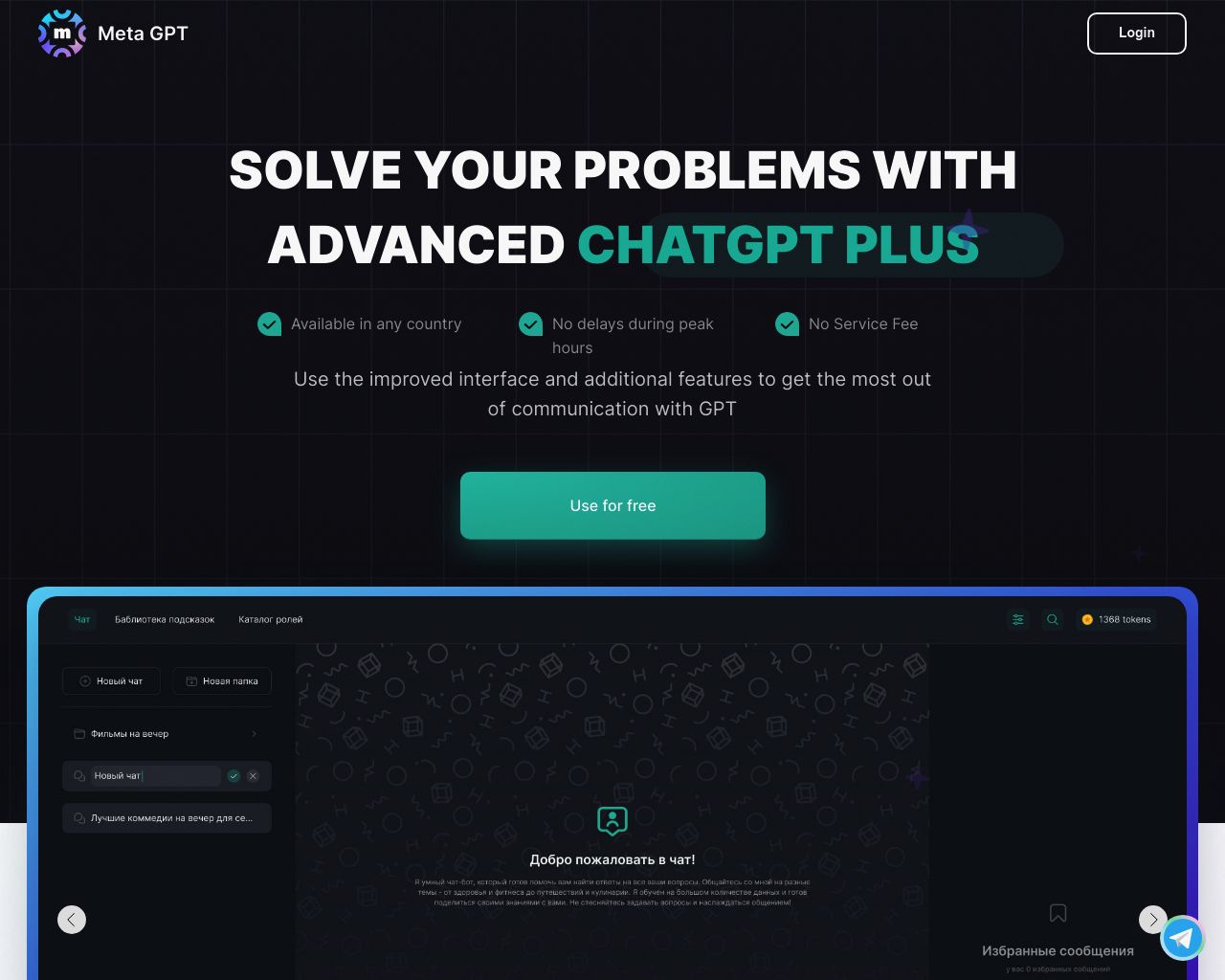Torq Hyperautomation vs. MetaGPT: AI Automation Showdown
AI-powered automation platforms are transforming how businesses operate, from enhancing cybersecurity to revolutionizing software development. This review compares Torq Hyperautomation, a security-focused solution, with MetaGPT, an innovative framework for AI-driven software development. We’ll explore their unique features, strengths, and limitations, and introduce SmythOS as a versatile alternative that bridges the gaps between these specialized tools. Whether you’re a developer seeking powerful APIs, a business leader focused on scalability and security, or an AI enthusiast exploring new possibilities, this comparison will help you navigate the landscape of AI automation platforms and choose the solution that best fits your needs.
Torq Hyperautomation Overview
Torq Hyperautomation delivers an enterprise-grade security hyperautomation platform that revolutionizes cybersecurity operations. The software connects diverse security tools, enabling organizations to swiftly remediate threats and orchestrate complex processes at scale.


Torq’s platform excels in workflow automation, offering a visual designer that simplifies the creation of intricate security processes. Users leverage customizable logic, triggers, and steps to automate tasks across their security infrastructure. The no-code approach democratizes automation, allowing security professionals of all technical levels to contribute to enhanced operational efficiency.
Torq’s platform excels in workflow automation, offering a visual designer that simplifies the creation of intricate security processes.
Key features include extensive third-party integrations, automated case management, and flexible workspace management. These components work in concert to streamline security operations, reducing manual workload and accelerating incident response times. Torq’s emphasis on scalability ensures that as security needs grow, the platform adapts seamlessly.
While Torq Hyperautomation focuses on security automation, it lacks specific AI agent capabilities. The platform doesn’t offer autonomous AI agents or foundation models, which may limit its applicability in scenarios requiring advanced AI-driven decision-making. However, its robust integration capabilities and workflow automation strengths position it as a powerful tool for security-focused organizations seeking to enhance their operational efficiency.
Torq’s vision centers on empowering organizations to achieve autonomous security operations. By leveraging AI-driven hyperautomation, Torq aims to enhance overall security postures while freeing security professionals to focus on strategic initiatives. As cyber threats evolve, Torq’s platform continues to adapt, providing cutting-edge solutions for the ever-changing landscape of enterprise cybersecurity.
MetaGPT Overview
MetaGPT revolutionizes multi-agent collaboration by fusing human Standardized Operating Procedures (SOPs) with advanced Large Language Models (LLMs). This open-source framework simulates a software company’s structure, assigning distinct roles like product managers, architects, and engineers to AI agents.


MetaGPT’s core philosophy, “Code = SOP(Team),” integrates established human practices into AI-driven processes. This approach tackles complex software development tasks, producing coherent, high-quality code while minimizing errors common in multi-agent systems. The platform breaks down projects into manageable subtasks, leveraging specialized agents to contribute their expertise.
MetaGPT revolutionizes multi-agent collaboration by fusing human Standardized Operating Procedures (SOPs) with advanced Large Language Models (LLMs).
A standout feature of MetaGPT is its comprehensive documentation generation. Throughout the development process, it creates requirement documents, design artifacts, flowcharts, and interface specifications. These intermediate outputs enhance the final code’s success rate and facilitate smoother human-AI interaction.
While MetaGPT excels in simulating software development teams, it lacks some features found in more comprehensive AI platforms. It doesn’t offer hosted agents for development and production environments, visual builders, or no-code editors. The platform also doesn’t provide autonomous agents or multi-agent collaboration beyond its simulated software development team structure.
MetaGPT’s unique approach to AI-driven software development opens new possibilities for complex, real-world applications. By incorporating human-like SOPs and structured communication protocols, it sets a new standard in AI and multi-agent collaboration. However, users seeking a more versatile platform with extensive integration capabilities and user-friendly interfaces might find MetaGPT’s specialized focus limiting.
Feature Comparison
Torq Hyperautomation and MetaGPT offer distinct approaches to AI-driven automation, with significant feature gaps between them. Torq focuses on security operations automation, while MetaGPT simulates software development teams using AI agents.
Torq Hyperautomation provides robust workflow automation capabilities with a visual designer, allowing users to create complex security processes without coding. It offers extensive third-party integrations, automated case management, and flexible workspace management. However, Torq lacks specific AI agent capabilities and doesn’t support autonomous AI agents or foundation models.
MetaGPT, on the other hand, excels in simulating software development teams using AI agents with distinct roles. It generates comprehensive documentation throughout the development process, including requirement documents, design artifacts, and interface specifications. However, MetaGPT doesn’t offer hosted agents for development and production environments, visual builders, or no-code editors.
In terms of security features, Torq Hyperautomation has a clear advantage with its focus on enterprise-grade security operations. It likely includes data encryption and IP control measures, though these aren’t explicitly mentioned. MetaGPT, being primarily a software development simulation tool, doesn’t emphasize security features to the same extent.
We offer a more comprehensive solution with SmythOS, bridging the gaps between these platforms. Our hosted agents support both development and production environments, and we provide a visual builder with no-code options. SmythOS also offers robust security features, including data encryption and OAuth support, while maintaining the flexibility to deploy as APIs, webhooks, or scheduled agents. This combination of features addresses the limitations of both Torq Hyperautomation and MetaGPT, making SmythOS a more versatile choice for a wider range of AI automation needs.
Feature Comparison Table
| Torq Hyperautomation | MetaGPT | SmythOS | |
|---|---|---|---|
| CORE FEATURES | |||
| Visual Builder | ✅ | ❌ | ✅ |
| No-Code Options | ✅ | ❌ | ✅ |
| Explainability & Transparency | ❌ | ✅ | ✅ |
| Problem-Solving Capabilities | ❌ | ✅ | ✅ |
| Human-AI Interaction | ❌ | ✅ | ✅ |
| SECURITY | |||
| IP Control | ✅ | ❌ | ✅ |
| COMPONENTS | |||
| Huggingface AIs | ❌ | ✅ | ✅ |
| Zapier APIs | ❌ | ✅ | ✅ |
| All other APIs, RPA | ❌ | ✅ | ✅ |
| Logic | ❌ | ✅ | ✅ |
| Data Lakes | ✅ | ❌ | ✅ |
| DEPLOYMENT OPTIONS (EMBODIMENTS) | |||
| Deploy as API | ❌ | ✅ | ✅ |
| Staging Domains | ✅ | ❌ | ✅ |
| Production Domains | ❌ | ✅ | ✅ |
| API Authentication (OAuth + Key) | ❌ | ✅ | ✅ |
| Deploy as Scheduled Agent | ❌ | ✅ | ✅ |
| Scalability | ❌ | ✅ | ✅ |
| DATA LAKE SUPPORT | |||
| Hosted Vector Database | ✅ | ❌ | ✅ |
| Sitemap Crawler | ❌ | ❌ | ✅ |
| YouTube Transcript Crawler | ❌ | ❌ | ✅ |
| URL Crawler | ❌ | ✅ | ✅ |
| PDF Support | ❌ | ✅ | ✅ |
Best Alternative to Torq Hyperautomation and MetaGPT
SmythOS emerges as the superior alternative to Torq Hyperautomation and MetaGPT, offering a comprehensive AI automation platform that combines the strengths of both while addressing their limitations. Our platform provides a versatile solution for creating and deploying AI agents across various use cases.
We excel in ease of use with our intuitive drag-and-drop interface and no-code options, making AI development accessible to users of all skill levels. This visual approach simplifies the creation of complex workflows without sacrificing functionality, allowing rapid development and deployment of AI solutions.
SmythOS offers a broader range of capabilities. We support multimodal interactions, enable multi-agent collaboration, and provide robust problem-solving tools.
Our feature set surpasses both competitors. While Torq focuses on security automation and MetaGPT simulates software development teams, SmythOS offers a broader range of capabilities. We support multimodal interactions, enable multi-agent collaboration, and provide robust problem-solving tools. Our platform also includes advanced security features like data encryption and OAuth support, ensuring enterprise-grade protection for your AI applications.
SmythOS stands out with its flexibility in deployment options. Users can deploy AI agents as APIs, webhooks, scheduled tasks, or integrate them into existing systems. This versatility, combined with our scalable infrastructure, allows businesses to adapt AI solutions to their specific needs and grow without constraints.
By choosing SmythOS, you gain access to a powerful AI operating system that streamlines the entire process of creating, deploying, and managing AI agents. Our platform’s comprehensive approach empowers users to harness the full potential of AI, driving innovation and efficiency across industries. With SmythOS, you’re not just building AI agents; you’re revolutionizing your workflows and unlocking new possibilities for your business.
Conclusion
Torq Hyperautomation and MetaGPT offer specialized solutions for security automation and software development simulation, respectively. Torq excels in security workflow automation, while MetaGPT shines in simulating software development teams. However, both platforms have limitations in their scope and feature sets.
SmythOS emerges as a superior alternative, addressing the limitations of both Torq and MetaGPT while offering a more comprehensive suite of features. Our platform provides hosted agents for development and production, a visual builder with no-code options, and robust security features including data encryption and OAuth support. SmythOS also offers unparalleled flexibility in deployment options, allowing users to implement AI solutions as APIs, webhooks, or scheduled agents.
The versatility of SmythOS makes it an ideal choice for a wide range of users, from developers and business leaders to AI enthusiasts and industry-specific professionals. Our platform’s ability to handle complex tasks, support multimodal interactions, and facilitate multi-agent collaboration sets it apart in the AI automation landscape.
To experience the power and flexibility of SmythOS firsthand, we invite you to explore our diverse range of AI-powered agent templates. These templates cover multiple business categories and offer a quick start to revolutionizing your workflow. For those ready to dive deeper, create a free SmythOS account and start building AI agents with no time limit or risk. Unlock the full potential of AI for your business and join the future of workforce automation with SmythOS.
Last updated:
Disclaimer: The information presented in this article is for general informational purposes only and is provided as is. While we strive to keep the content up-to-date and accurate, we make no representations or warranties of any kind, express or implied, about the completeness, accuracy, reliability, suitability, or availability of the information contained in this article.
Any reliance you place on such information is strictly at your own risk. We reserve the right to make additions, deletions, or modifications to the contents of this article at any time without prior notice.
In no event will we be liable for any loss or damage including without limitation, indirect or consequential loss or damage, or any loss or damage whatsoever arising from loss of data, profits, or any other loss not specified herein arising out of, or in connection with, the use of this article.
Despite our best efforts, this article may contain oversights, errors, or omissions. If you notice any inaccuracies or have concerns about the content, please report them through our content feedback form. Your input helps us maintain the quality and reliability of our information.
